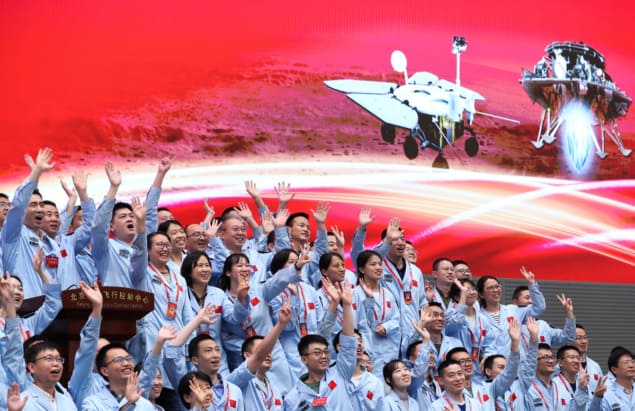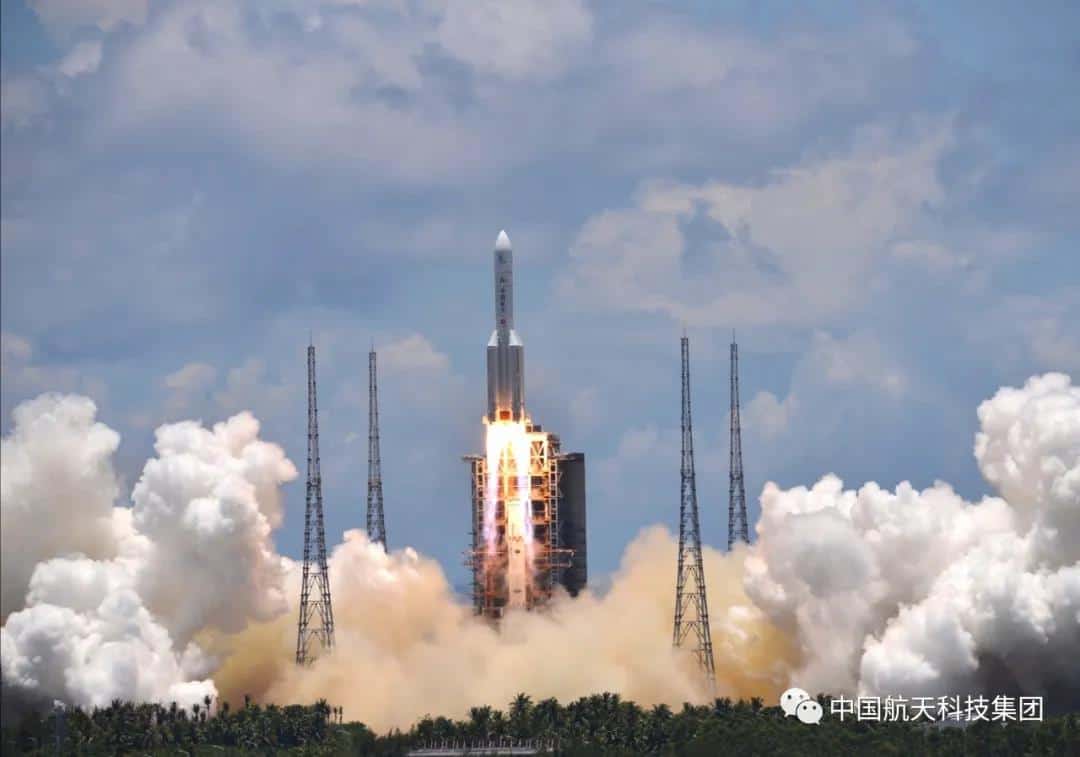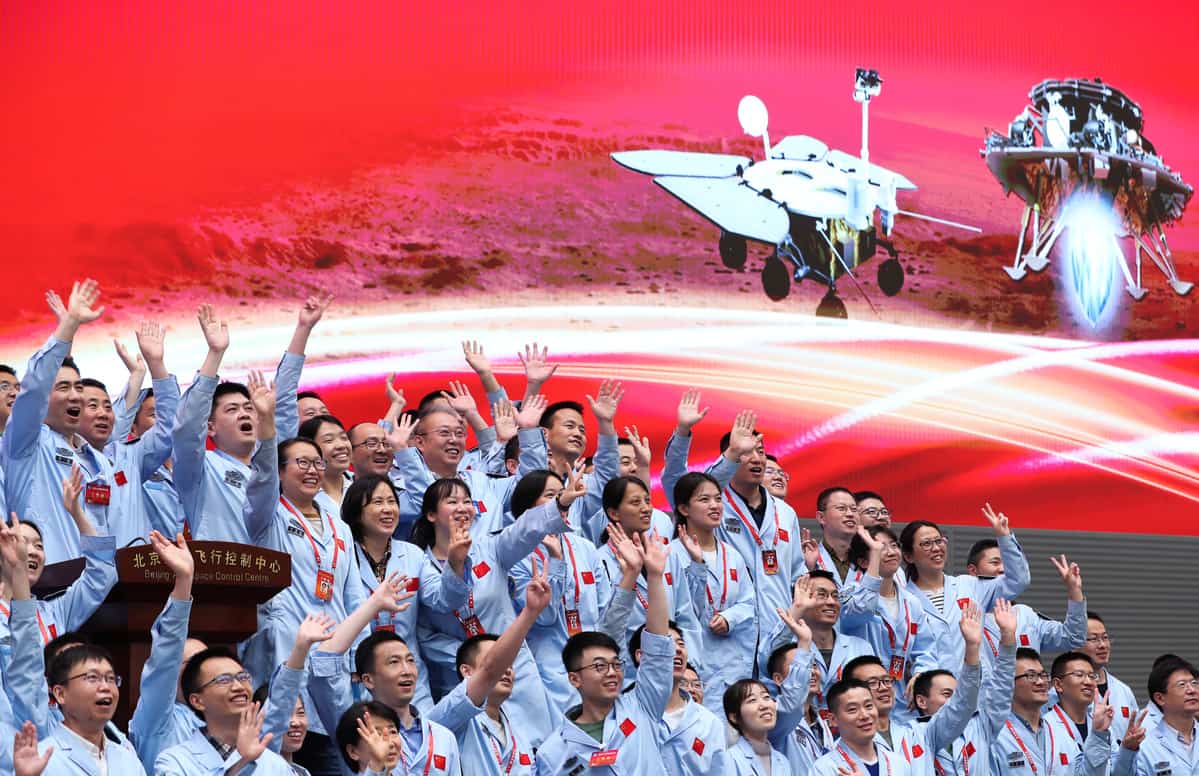
China has become the second country after the US to successfully land a spacecraft on the surface of Mars. According to the state media, the controlled touchdown of Zhurong — a six-wheel rover named after a fire god in Chinese mythology – occurred at around 7:18 a.m. Beijing Time on 15 May. It landed, as planned, in southern Utopia Planitia, which is a largely flat area between 25° and 30° north of the Martian equator.
Landing a spacecraft on the surface of Mars is one of the hardest things to do in planetary exploration
John Logsdon
Zhurong was launched in July 2020 as part of China’s first independent Mars mission Tianwen-1. The mission arrived at Mars in February where it orbited the red planet for three months, searching for the best location to descend. Tianwen-1 then released the lander – containing Zhurong — after 1 a.m. on 15 May. The lander first used a heat shield during entry into the Martian atmosphere followed by a parachute during descent near the surface before finally firing a “retro engine” to safely land. With Tianwen-1 still in orbit, it will now provide relay communication between Zhurong and the Earth.
Only about half of the attempts to orbit or land on Mars have succeeded. Before Zhurong, the US has put eight landers and rovers on Mars including most recently the Perseverance rover. “Landing a spacecraft on the surface of Mars is one of the hardest things to do in planetary exploration,” says John Logsdon, a space policy expert with George Washington University. “China is to be congratulated on its success on its first attempt at achieving such a landing.”
Next steps
According to the state media, Zhurong is soon expected to roll off the landing platform and onto the Martian surface for scientific exploration. Onboard Zhurong are six scientific instruments including a navigation and topography camera, a subsurface detection radar as well as surface magnetic-field detector. As scientists have long suspected that Utopia Planitia is covered with ancient mudflows, the rover will aim to examine the distribution of water/ice and look for signs of past life. “We look forward to Zhurong’s scientific discoveries at Utopia Planitia by probing the surface and subsurface, so we can better understand the history of Martian water and habitability,” says Bernard Foing from the European Space Agency, who is also director of the International Lunar Exploration Working Group’s EuroMoonMars Initiative.

China successfully launches Tianwen-1 Mars probe
This year marks an intense period of launches and space activities for China. Just last month, the country sent the 22-tonne core module of the Chinese Space Station into the low-Earth orbit. Later this month and early next, a cargo and crewed mission will follow to get the station operational. By 2022, when complete, it will be join the US-led International Space Station as the only fully-functional space stations.
